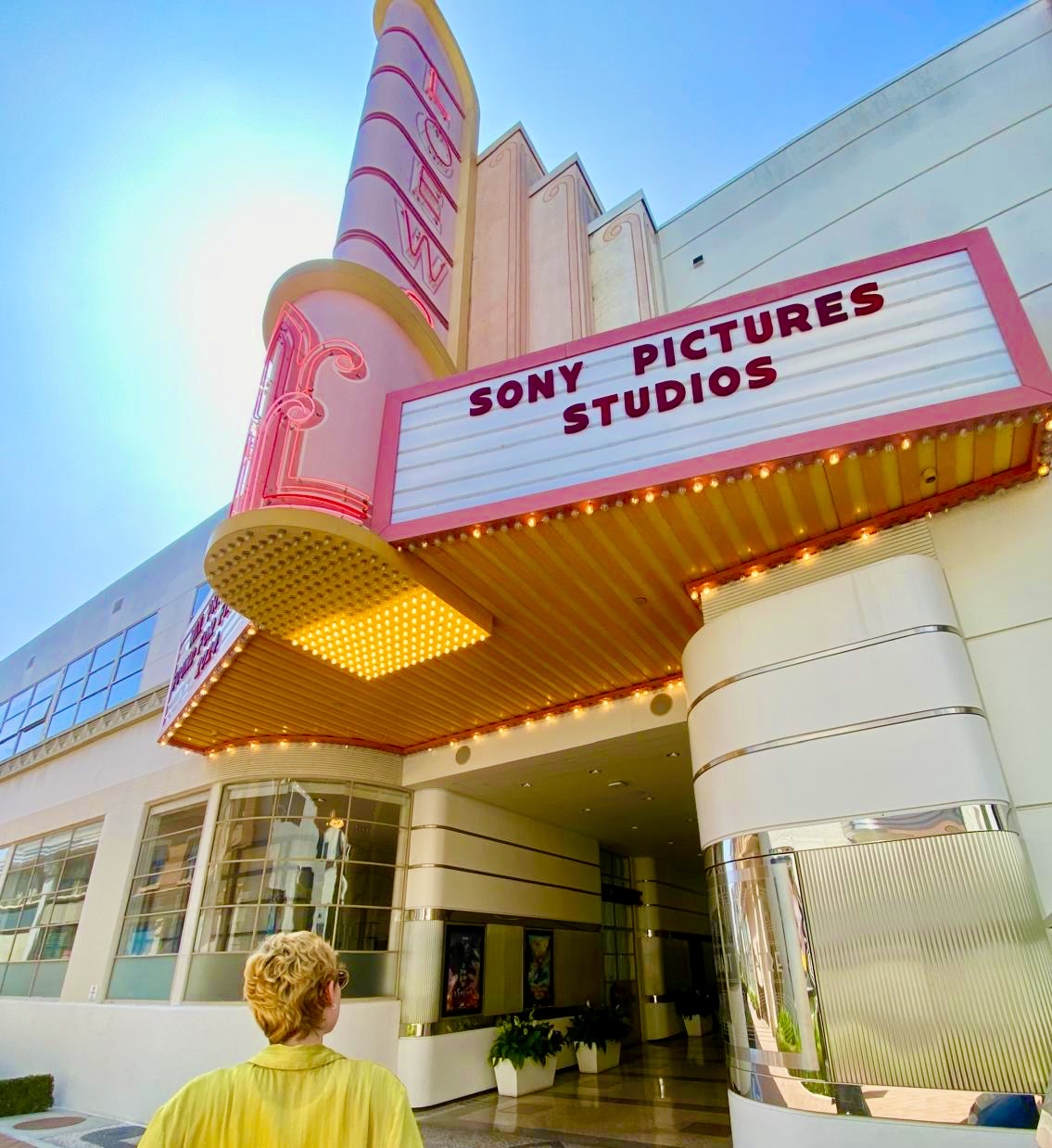INT BAR.
Sophie Sound is still in the bar looking outside the huge panoramic convex window. Curious as she is asking the dwarf if she can come behind the bar and get closer to the window.
Dwarf:
Not many people have the guts to ask me that?
Sophie:
Why not?
Dwarf:
Not everyone is that curious. Come and have a look if you want, just don’t touch anything.
Sophie:
What happens if I touch something?
Dwarf:
Just don’t do it.
INT. BAR WINDOW
Sophie Sound at the big window daring not to touch anything. Sounds materialize. Putting her ear next to the window, but not touching it! Microscopically listening into the distant landscape on the other side of the glass.
SFX: People whispering, music, weird drones, cars, all sorts of sounds.
Taking steps to the left she hears more sounds coming from the right. Sophie making steps to the right hears more sounds now coming from the left. From the very right she looks at a huge extension of the building like a big brain. Trying to see more, Sophie’s ear accidentally touches the glass!
Sophie
Sound: Shit
Glass:
Ups!
Running back to her seat before the dwarf could realize.
SFX: Whoosh Sound close to her ear. Another one through the convex window. A sound so strange and weird that it is hard for her to identify. Two sounds again passed by her ears.
Teasing Sound:
Follow me.
Fast as a blurry matrix bullet the same sound flies by her right and then left ear over and over again. A soft whisper, so appealing and enchanting, Sophie Sound picks up her things and follows the sounds to the end of the bar, passing the man on the computer machine.
Man:
Don't forget it is a convex window.
Sophie Sound:
Thank you.
She follows the sound that leads her to a big gallery, the whispering gallery, with the whispering walls.
Sophie has a choice. Two Signs on the top of the arch: Listen to the absolute best Cinema Sound in the world in Dolby Atmos with a movie to the left or go eat, to the right.
Instantly taking the left to the Dolby Atmos Cinema she finds herself in a long tunnel with convex domes dressed in red velvet curtains. The familiar Sound appears behind her and she turns. Then the familiar sound is infront her, she walks over to hear it. Bouncing off the walls in befuddling directions. Then…
Teasing Sound:
Always about Sound you, come on, follow me.
Trying to catch up to the sound as it bounces off the round walls onto the round ceiling, bouncing off the other end. Then running towards the other end, a laughing sounds bounces back to the other end agin, where an escalator takes Sophie down a level. Sound still bouncing off the stairs teasing her.
Teasing Sound:
Catch me if you can, Sophie Sound.
Sophie Sound in a huge, multi-level space with elevated walkways with multiple entrances and exits, hallways and floors with carpets. Then an empty room but hearing hundreds of people walking through the hall. Crowded Walla and muffled voices. The teasing sound disappears in the crowd.
Sophie Sound:
Where did the sound go?
As she passes through the invisible crowd, she bumps into people constantly that call her out.
Invisible Person 1:
Watch out where you are walking.
Stepping on someone's foot she keeps walking, trying to find the sound in the crowd.
Invisible Person 2:
You just stepped on my foot.
Sophie Sound:
I am sorry, I don't know where I am walking.
Invisible Person 2:
That's ok. Just follow the sound.
Sophie Sound:
You can talk to me?
Invisible Person 2:
Sure I can talk to you!
Sophie Sound:
Can you hear the sound?
Invisible Person 2:
Yeah I just heard it over there. See the light bulbs and the cinema?
Sophie Sound:
Oh thank you…
Invisible Person 2:
Adrian. You’re welcome.

INT Cinema
The teasing sound bouncing from one light bulb to the other.
Teasing Sound:
Wel-come-to-the-cinem-a
A poster on the wall advertises a movie with the “Absolute best Sound System In the World, in Dolby Atmos”.
Sophie Sound:
Oh wow, I want to listen to that.
Sophie Sound going to the box office. No one there, just the teasing sound.
Teasing Sound:
I am the bouncing, teasing sound. I come from Never Stop Never Stopping. You’re ear touching the glass set me free. Which movie do you want to listen to? We have “Toxic Aventure 2” or „A History of Love and War” that just has started. The lights are off, please be quiet and sit down right away.
Sophie Sound:
“A History of Love and War”…Is there popcorn and water? I haven't eaten in a while…
SFX:
A sound of corn popping and water filled into a cup.
Teasing Sound:
It is now. Your seat number is E9.
Sophie Sound:
Is it right in the middle row and the middle seat?
SFX:
Printing a ticket.
Teasing Sound:
Now it is.
Sophie Sound watching the Movie, when the lights turn on and someone is sitting in the row behind her. She turns around.
Sophie Sound:
Have you heard that sound system…and wow, what cinematography!!!!
Adrian:
Hi, I am Adrián Cores del Rio. You stepped on my foot in the hallway. You like the cinematography?
